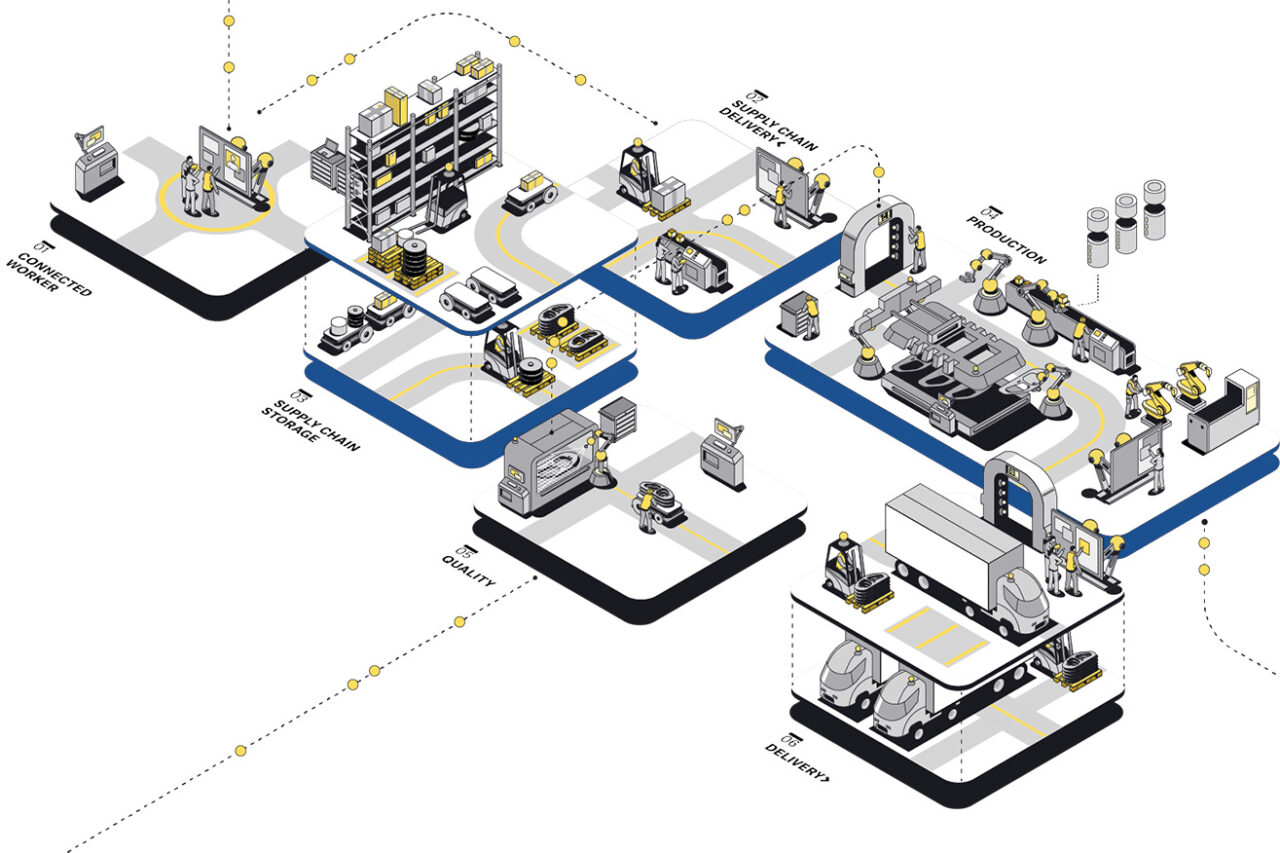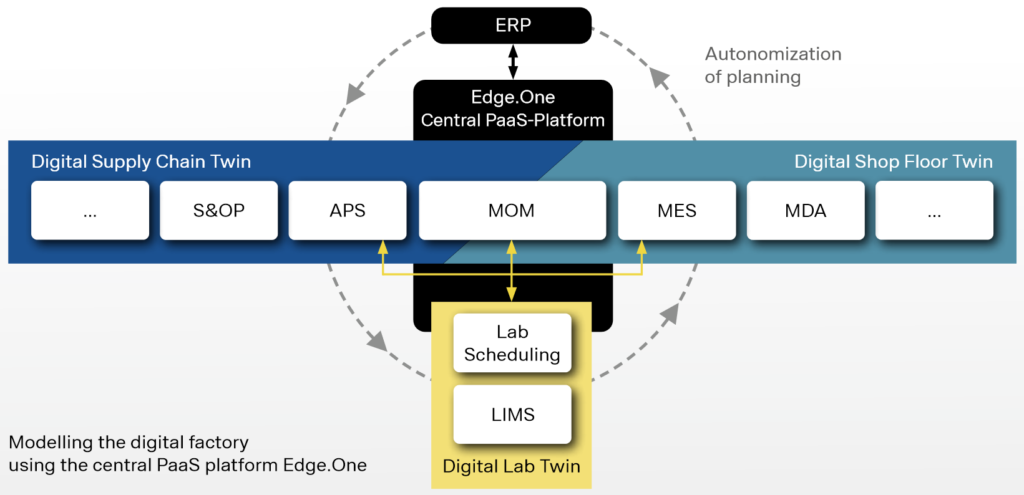The digital supply chain twin: enabler of the digital factory

Digital supply chain twin: The central planning hub for a global real-time monitoring of value chains
The digital supply chain twin forms the central strategic planning element combining strategic planning levels such as sales & operations planning (S&OP), demand planning, inventory optimisation with operative planning tools of advanced planning & scheduling (APS). Thus, the hub models the interaction of customers, suppliers and the shop floor to display production alternatives and alternative procurement methods (e.g. make or buy) in real time and on a simulation basis. The planning scenarios applied to this process can be compared against each other through a wide variety of key figures such as customer segmentation, product contribution margin or expected contractual penalties.
ORSOFT broadens the modelling of the digital supply chain twin: Quality management and shopfloor as an integral part of production planning
As the industry continuously generates large amounts of master and transaction data – such as countless data points on raw material or customer files, sensor data from the process/production plants or in the form of laboratory information – the information is stored in the central ERP or in digital twin applications such as in MDX (machine data exchange), SCADA (supervisory control and data acquisition) or QMS (quality management system).
Benefits from applying an extended digital supply chain twin
- Modelling of an end-to-end approach with real-time synchronisation across all supply chain levels, the operational shop floor and quality management
- Merging formerly autarkic isolated solutions and silos in the shop floor (actual state) and supply chain management (planned state) into a joint digital ecosystem
- Holistic optimisation of the scheduling process controlled across all levels
- Aligning production planning on key indicators such as delivery reliability, maximisation of plant throughput and/or minimisation of inventories
- Indications of capacity conflicts on the shop floor and automated adjustment of planning through comparison with the forecasts from demand planning
PaaS application Edge.One: The digital factory as an interlinked and synchronised ecosystem
The Digital Factory thus needs a central digital hub that links and synchronises the digital twins. Even though the term Digital Factory is quite broad, it can still be easily transferred to industrial reality. Platform as a service (PaaS) solutions like Edge.One may provide the digital anchor for future smart extensions, for example in the form of IIOT, augmented reality or blockchain applications.

